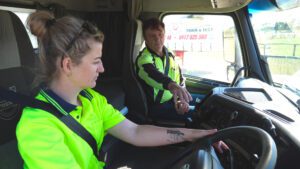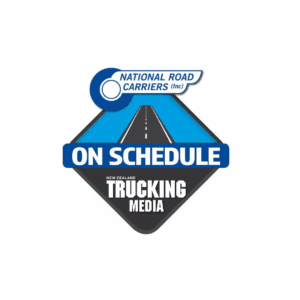The Road to 2025 – why connectivity will drive fleet success
As we approach the end of another year, it’s a good time to reflect on the future for fleet businesses in New Zealand. The next few years promise to be transformative, driven by advances in connectivity that will reshape how fleet businesses operate. In 2025, those who look to adapt will be better set to thrive in a landscape where efficiency and responsiveness are critical.
3G network shutdowns
The scheduled shutdown of 3G networks presents a pressing challenge for many fleet operators still using outdated devices. With Spark, 2degrees, and One NZ all planning to phase out 3G in 2025, businesses that fail to upgrade risk facing significant operational disruptions. If your fleet is relying on outdated devices, now is the time to act. It could be anything from your telematics to point of sale and security systems.
Continuing to use 3G technology will only lead to disruptions. Devices that operate on these networks will lose the ability to transmit data, which means you could face communication breakdowns and tracking failures. The result? Delays, inefficiencies and safety risks on the road.
Upgrading to 4G-enabled systems means better security and bandwidth, providing access to more information at any given time. This transition enables fleet managers to leverage real-time information for quicker decision-making.
The rise of smart technologies
With fuel prices still high, operational costs growing while budgets reduce, road conditions degenerating and traffic getting more congested, the demand for operational efficiency is at an all-time high. Enter the Internet of Things (IoT). By embedding telematics in vehicles, fleet managers can track everything from fuel consumption to vehicle health. Imagine large freight trucks fitted with IoT devices that provide real-time insights into cargo integrity and vehicle performance.
This constant flow of data allows for proactive maintenance, minimising downtime and repair costs. IoT also aids in route management, allowing fleet managers to predict traffic patterns and make real-time adjustments, ultimately saving time and reducing fuel costs.
Connectivity-powered efficiency
The advances in 4G, 5G, and AI technologies are setting the stage for a new era in fleet management. We’re on track to see around 30.9 billion IoT-connected devices globally by 2025. Soon, it’ll be an even more interconnected environment where vehicles communicate with back offices as well as with one another and the infrastructure around them.
AI tools are advancing fleet management by analysing patterns to tell you the information you need. Smart cameras are now integral to fleet operations, monitoring driver behaviour and offering real-time feedback on road conditions. For instance, Teletrac Navman’s Smart Dashcam combines AI, telematics data and advanced onboard sensors to detect and analyse events on the road. This innovation enables fleet managers to discuss improvements with their drivers.
Streamlined RUC
Managing Road User Charges (RUC) has traditionally been a cumbersome and manual process for fleet businesses in New Zealand. Digital RUC solutions integrated into fleet management platforms are simplifying this task. IoT-powered Electronic Distance Recorders (EDRs) automate the tracking of both on-road and off-road travel, calculating RUC accurately and maximising potential rebates. This eliminates the need for paper records, reducing errors and administrative burden.
Proactive fatigue management
By integrating RUC management into telematics platforms, fleet operators can achieve a more unified view of their operations. Systems like Teletrac Navman’s TN360 offer seamless integration of vehicle tracking, job scheduling and driver performance monitoring, making it easier to manage all aspects of fleet operations.
Driver fatigue is another area where connectivity can make a real difference. Advanced connectivity offers solutions through fatigue monitoring systems that track service hours, keeping you compliant with fatigue laws. This is further improved with Teletrac Navman’s IQ camera drowsiness alerts, which helps detect signs of tiredness and warns the driver to keep them safer on the roads.
By identifying early signs of fatigue, fleet managers can intervene to help prevent incidents and disruptions. Beyond compliance, fatigue management solutions are about protecting drivers and reducing the costs associated with incidents and downtime.
Connectivity in motion
Looking ahead, fleet businesses will find themselves in a world where connectivity will be deeply integrated into daily operations. Technologies will reshape the industry, with smart cameras, integrated RUC management and fatigue monitoring leading the charge.
To reap these benefits, businesses must be proactive. Fleet managers who prioritise upgrading their systems and adopting advanced telematics will be well-positioned to thrive. Don’t wait for the 3G shutdown to act – the future of transport demands connectivity.
Teletrac Navman provides cutting-edge telematics solutions to enhance fleet management, safety, and compliance. Visit https://www.teletracnavman.co.nz/ to discover how your fleet can stay ahead of the curve in 2025.





